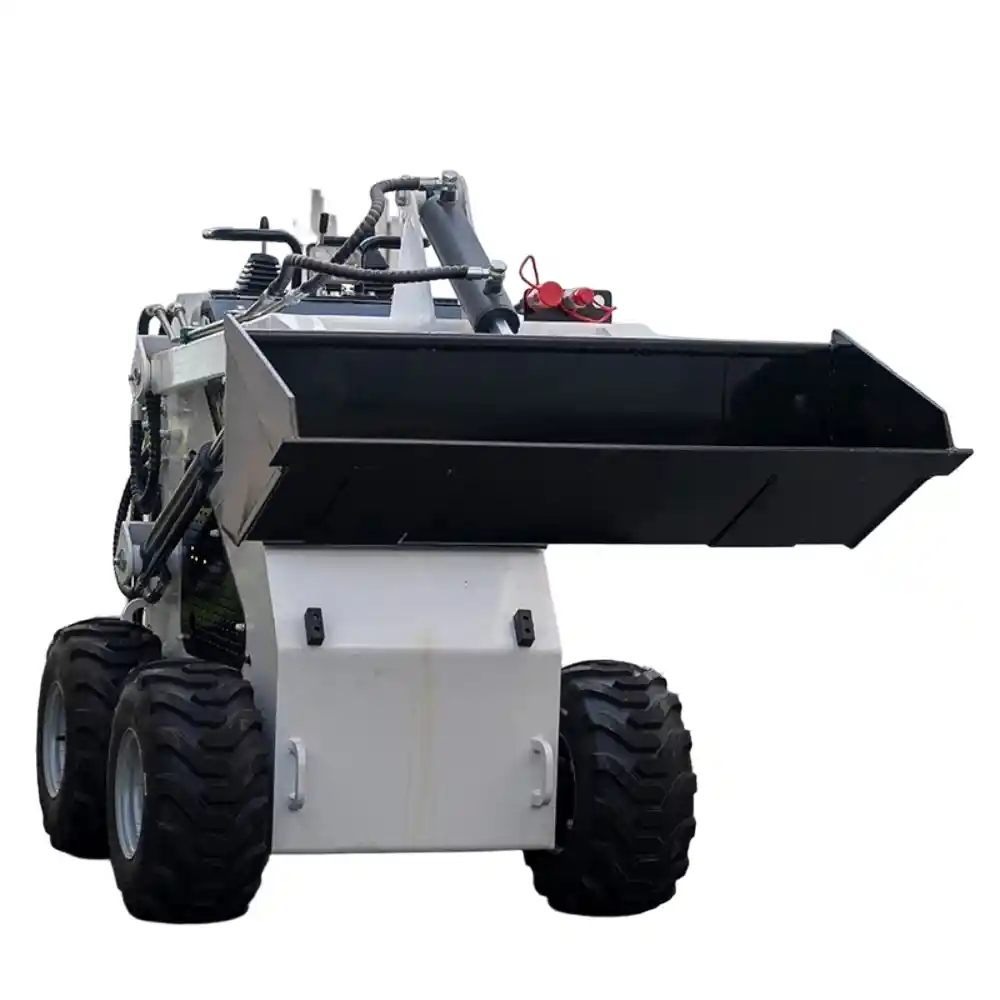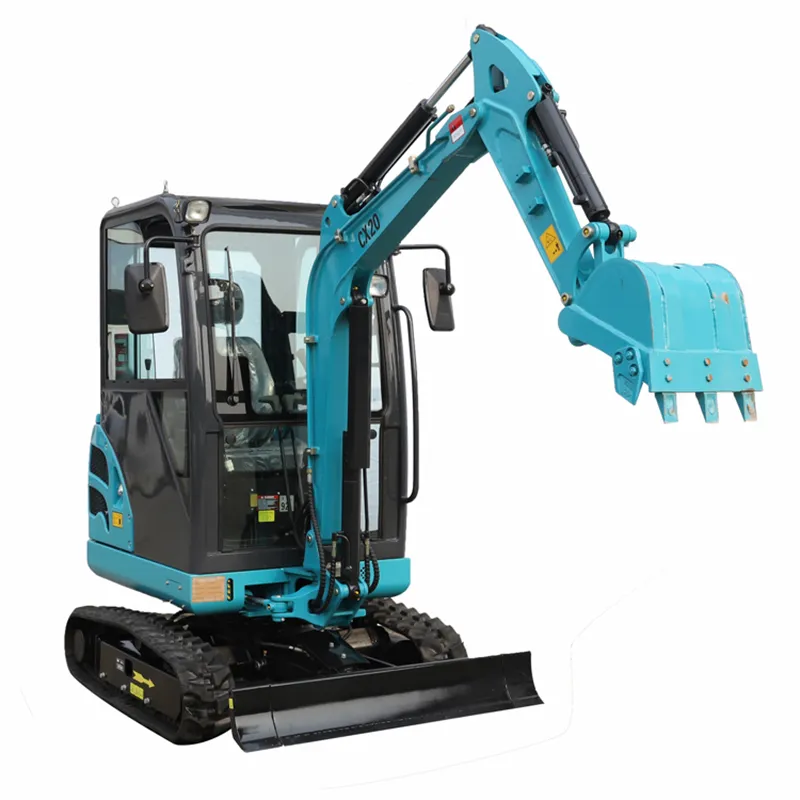In the field of construction engineering, excavators, as the core construction equipment, are selected in direct relation to project efficiency, cost control and quality assurance. In this article, we will provide construction engineering companies with a comprehensive guide to choosing the most suitable excavator from multiple dimensions, such as excavator type and applicable scenarios, key performance parameters, brand and price considerations, maintenance and after-sales service, safety and operation, as well as environmental protection and energy saving, etc., and provide professional answers to common consumer questions, so as to help you make a wise investment decision.
Analysis of Excavator Types and Applicable Scenarios
Excavators, as the main equipment in construction projects, can be divided into several types according to their structural characteristics and functional differences, and each type has its unique applicable scenarios. Wheeled excavators are famous for their excellent maneuverability, especially suitable for urban construction sites, municipal projects and other occasions requiring frequent transitions, with fast driving speeds and little damage to road surfaces, but with relatively poor stability when working on soft ground. Crawler excavator with its strong stability and adaptability to become the first choice for most earth moving projects, especially suitable for complex terrain, ground conditions, such as mines, farmland and other environments, but its transfer needs to be transported by flatbed trucks, mobility is poor.

Mini excavator (micro excavator) is a good tool for narrow space operation, the weight is usually between 1-6 tons, suitable for indoor demolition, landscaping, pipeline laying and other space-restricted occasions. Large mining excavators, on the other hand, are designed for large-scale earth moving projects, with large bucket capacity and strong power, and are mainly used for open-pit mining, large-scale infrastructure and other projects. In recent years, the emergence of multifunctional excavators through the rapid replacement of different attachments (such as hydraulic hammers, wood grabbers, looseners, etc.) to achieve multi-purpose, greatly improving the utilization rate of the equipment, especially suitable for the need for a variety of operations of the comprehensive project.
Excavator selection in special environments is also worthy of attention: in the plateau region should be equipped with plateau-specific engine models; underwater operations need to be fully sealed underwater excavator with a longer arm; flammable and explosive environments need to choose explosion-proof excavator. Construction engineering companies should choose the most suitable combination of excavator types according to their main business types, operating environments and project characteristics, in order to realize the optimal allocation of equipment resources.
Interpretation of Key Performance Parameters and Purchasing Points
The technical parameters of excavators directly determine their working capacity and efficiency, and construction engineering companies should focus on the following core indicators when purchasing. Engine power is the basis of excavator power performance, usually expressed in kilowatts (kW) or horsepower (HP), and should be selected according to the regular operating intensity – insufficient power will lead to inefficiency, and too much will cause fuel waste. Operating weight affects the stability and operating capacity of the excavator, ranging from a 1-ton miniature machine to an 800-ton super-large machine, with 20-30 ton models commonly used in general engineering.
Bucket capacity is directly related to the amount of single operation, the standard bucket is suitable for general earth moving projects, while the rock bucket, large bucket and other special bucket types are designed for specific working conditions. Digging force (including bucket bar digging force and bucket digging force) determines the equipment’s ability to break the earth, which is measured in kilo newtons (kN), and the model with larger digging force should be chosen for the application scenario of hard soil. The working range parameters (maximum digging radius, depth, height, etc.) need to be matched to the project requirements – such as deep foundation pit projects require a greater digging depth, while building demolition work requires a higher working height.
The performance of the hydraulic system has a significant impact on the accuracy and efficiency of the operation, and the mainstream brands adopt load-sensitive system or negative flow control system, the former is more accurate and the latter is more energy-saving. In addition, “soft” indicators such as cab comfort, humanized design of the control system, and richness of dashboard information are also getting more and more attention, which directly affect the operator’s work efficiency and fatigue. Construction engineering companies should establish a scientific parameter evaluation system, determine the priority of each parameter according to the characteristics of the project, and avoid the waste of resources caused by blindly pursuing high parameters.

Brand Selection And Cost-Benefit Analysis
global excavator market brands, each with its own characteristics, construction engineering companies need to be from the brand reputation, product performance, price positioning and other multi-dimensional comprehensive assessment. European and American brands such as Caterpillar (Caterpillar), Volvo (Volvo) and other advanced technology, durability is known, but the price is high and the maintenance cost is not expensive; Japanese brand Komatsu (Komatsu), Hitachi (Hitachi) and so on in the fuel economy and reliability of the outstanding performance, cost-effective and relatively high; South Korean brand Hyundai (Hyundai), Korean brands Hyundai (Hyundai), Doosan (Doosan) with rich configuration and price advantage, especially for small and medium-sized engineering companies with limited budget.
China’s domestic brands such as Sany, Xugong, LiuGong, etc. in recent years, significant progress, in the same configuration under the price than the imported brands 20% -30% lower, after-sales service network is also more complete, has become the first choice of many construction engineering companies. Purchase decisions should not only compare the initial purchase cost, but also need to consider the total life cycle cost (TCO), including fuel consumption, maintenance costs, parts prices, resale value, and so on. For a medium-sized excavator, for example, over a five-year lifespan, fuel costs may account for 40% of total costs, maintenance for 25%, and the initial purchase price for only about 35%.
Construction engineering companies can adopt a hybrid strategy of “high-end key equipment and economical auxiliary equipment” – selecting high-end brands to ensure the reliability of high-usage equipment for core operations; and considering more cost-effective brands for auxiliary or seasonal equipment. At the same time, attention should be paid to the local after-sales service capability of each brand to avoid delays in the project due to long waiting time for maintenance. Financial leasing and other flexible acquisition methods are also worth considering, especially for tight funds or project cycle is clear.
Maintenance And After-Sales Service Considerations
Reliable after-sales service network is crucial to guarantee the attendance of excavators, construction engineering companies should take after-sales support capacity as an important evaluation index when purchasing equipment. A perfect service system should include: fast-responding maintenance team, sufficient stock of original spare parts, regular maintenance reminders, operator training and so on. Surveys show that the average repair time (MTTR) after equipment failure increases by one day, which may cause downtime losses ranging from thousands to tens of thousands of dollars, so the density of service outlets and response speed should be the focus of the investigation.
Preventive maintenance costs should not be ignored, including regular replacement of filters, hydraulic oil, lubricants and other consumables, as well as the frequency of replacement of wear parts such as bucket teeth and track plates. Maintenance cycles and costs vary significantly across brands – certain high-end brands have high purchase costs, but thanks to long-life designs and standardized components, long-term maintenance costs are instead lower. Architectural and engineering firms should require suppliers to provide detailed maintenance schedules and projected cost analyses, and incorporate them into their overall purchase evaluations.
Establishing a scientific equipment management system can significantly extend the service life of excavators. It is recommended to implement a “manned machine” system, equipped with comprehensive operation records, and utilize IoT technology to realize remote monitoring and early warning. Sign a long-term maintenance agreement with the supplier (such as “all-inclusive service”) can often get a more favorable price and priority service, especially for large construction companies with more than one piece of equipment. At the same time, attention should be paid to the formal training of operators, according to statistics, 70% of early equipment failure is related to improper operation.
Safety Performance and Ease of Operation Evaluation
The safety design of modern excavators has become an important criterion to measure the quality of the equipment, which should be evaluated by construction engineering companies on several levels. Basic safety configurations include ROPS/FOPS certified anti-roll/anti-fall cabs, full-view rearview cameras, and reversing alarm systems, which are already mandatory standards in the European and American markets. Advanced safety systems such as proximity detection system (recognizes surrounding people and obstacles), automatic leveling system (prevents rollover for slope work), and load torque indicator (prevents overloading) can significantly reduce the risk of accidents, which is especially suitable for complex site environments.
Ergonomic design directly affects the operator’s fatigue level and work efficiency. A good cab should have: suspension seat, low noise design (<70dB), automatic temperature control, ergonomic handle layout, etc. Studies have shown that an optimized human-machine interface can increase operational efficiency by 15-20% and reduce long-term occupational health risks. Advances in control systems should not be overlooked, such as hydraulic pilot control that saves energy compared to traditional mechanical lever operation; while the introduction of electronic control systems realizes intelligent functions such as automatic attachment identification and one-button switching of working condition modes.
Construction engineering companies should prioritize equipment with international safety certifications (e.g., CE, ISO) and require suppliers to provide detailed safety operation training. For special working conditions (e.g., working near high-voltage lines, deep pit excavation, etc.), it is also necessary to assess whether the equipment has the appropriate professional safety configuration. It is worth noting that many of the new safety features, although an increase in the initial investment, but can reduce the accident rate, reduce insurance costs and improve work efficiency to obtain long-term returns.

environmental standards and fuel efficiency optimization
With increasingly stringent environmental regulations, excavator emission standards and energy performance has become a construction engineering companies can not ignore the purchase factors. Currently the world’s main implementation of Stage Ⅴ / Tier4Final emission standards, requiring significant reductions in nitrogen oxides and particulate matter emissions, in line with these standards, although the price of the model is higher, but can avoid the risk of possible future environmental restrictions. As an emerging option, electric excavators realize zero emissions and low noise, especially suitable for indoor operations and environmentally sensitive areas. Although the initial investment is high, the operating cost is only 1/3-1/2 of that of diesel engines.
Fuel efficiency has a direct impact on the operating cost. Fuel consumption of different brands and models of excavators may vary by as much as 15-20% even if they have the same power. When evaluating fuel economy, you should not only look at the manufacturer’s data, but also refer to user feedback under actual working conditions. Energy-saving technologies such as automatic engine idling, hydraulic system optimization, energy recovery, etc. can significantly reduce fuel consumption. Take a 20-ton excavator as an example, an advanced energy-saving system can save 30,000-50,000 yuan in fuel costs per year.
Construction engineering companies can take the following strategies to balance environmental protection and cost: use electric or the latest emission standard equipment for projects with high environmental protection requirements in the city; in remote areas, the requirements can be appropriately relaxed to reduce costs. At the same time should pay attention to the direction of environmental protection policies around the world, planning ahead of the equipment renewal roadmap, to avoid the loss of equipment elimination due to sudden changes in policy. Hybrid excavator although the current price is high, but with technological progress and scale effect, the future may become an ideal choice for both environmental protection and practical.
consumer FAQ professional answers
In the actual purchase process, construction engineering companies often encounter a variety of confusions and questions, the following are for high-frequency issues of professional answers:
Q1: the same tonnage of the excavator price difference is so big?
A1: The price difference mainly stems from the brand premium, the source of core components (such as engines, hydraulic pumps), technical content and configuration level. Models with imported key components cost more but are usually more reliable; and additional features such as intelligent control systems and energy-saving technologies will also increase the cost. It is recommended to weigh according to the budget and intensity of use, do not have to blindly pursue high configuration.
Q2: What do I need to pay attention to when buying a used excavator?
A2: Evaluating used equipment should focus on: whether the number of hours matches the actual wear and tear (check the contact parts such as pedals, operating levers, etc.), the state of the engine and the hydraulic system (measure the pressure, observe the color of the exhaust gas), and whether there are any cracks or traces of repair in the structural parts. Ask for complete maintenance records, and preferably hire a professional mechanic to inspect the machine. Consider the ratio of remaining useful life to price, usually equipment with more than 8,000 working hours has limited residual value.
Q3: Which is more cost-effective, leasing or buying?
A3: It depends on the frequency of use and the project cycle. Rough calculation: leasing is recommended for less than 1,000 hours of annual use; finance leasing can be considered for 1,000-2,000 hours; and direct purchase is more economical for more than 2,000 hours. At the same time, tax incentives (VAT deduction for purchase, depreciation tax credit, etc.) and capital liquidity needs should be considered.
Q4: How to judge whether the supplier’s after-sales service is reliable?
A4: It can be assessed by the following indicators: the average distance between service outlets and construction sites, the promised response time, whether to provide standby service, the supply cycle of spare parts, and the qualification of service engineers. It is recommended to inspect the service experience of several purchased customers on the spot and pay attention to the fault resolution rate and service attitude.
Q5:Why is there a significant difference in fuel consumption of the same model of equipment under different working conditions?
A5:Fuel consumption is affected by a variety of factors: operating mode (continuous excavation saves more fuel than intermittent operation), load level (the best efficiency range is 70-85% load), ambient temperature (low temperature increases fuel consumption), altitude (efficiency decreases in plateau areas), operator habits (aggressive operation increases fuel consumption by 15-25%) and so on. It is recommended to measure the fuel consumption for the main working conditions.
By systematically analyzing the various key dimensions of excavator purchase, construction engineering companies can establish a scientific equipment selection system and avoid common selection misunderstandings. Before making the final decision, it is recommended to arrange a trial of the equipment to verify the actual performance, and at the same time, take into account the financial planning, project characteristics and long-term development strategy, to choose the excavator solution that truly matches the needs of the company. The right equipment investment will not only improve the efficiency of current project execution, but also win long-term advantages for the company in the fierce market competition.





